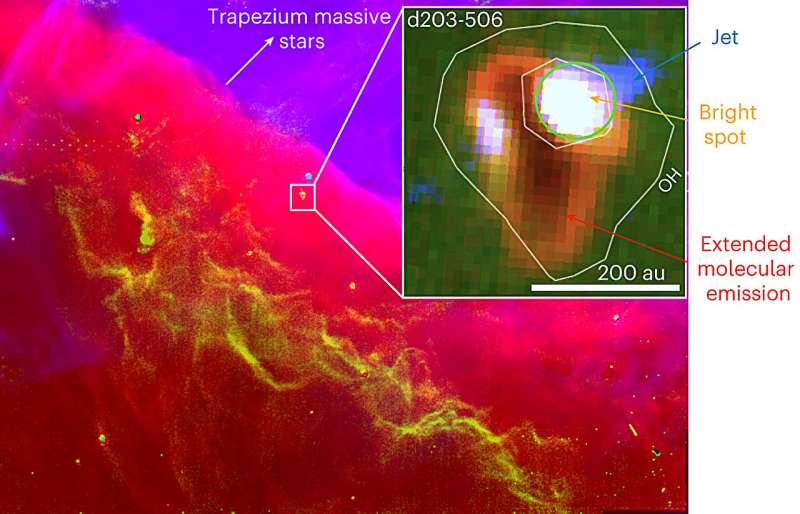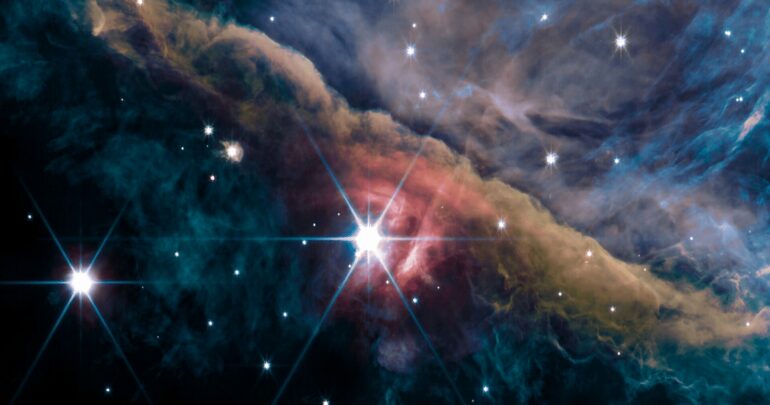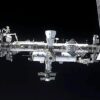An international team, including Western astrophysicists Els Peeters and Jan Cami, has found the destruction and re-formation of a large quantity of water in a planet-forming disk located at the heart of the Orion Nebula.
This discovery was made possible by an original multidisciplinary approach combining observations from the James Webb Space Telescope (JWST) and quantum physics calculations.
The study, a part of the PDRs4All Early Release Science program and led by University Paris-Saclay Ph.D. student Marion Zannese, was published today in Nature Astronomy.
PDRs4All is one of 13 Early Release Science programs selected by NASA to demonstrate the capabilities of the JWST, bringing together an international consortium.
“It is so impressive that in just a few pixels of observations, and focusing on a few of the lines, we can actually figure out that you have an entire ocean of water being evaporated every month,” said Peeters, co-lead investigator of PDRs4All and faculty member at Western’s Institute for Earth and Space Exploration. “This discovery was based on a tiny fraction of our spectroscopic data. It is exciting that we have so much more data to mine and I can’t wait to see what else we can find.”
Water is an essential ingredient for the emergence of life as it is currently understood. On Earth, most of the water in our oceans was formed long before the birth of the solar system, in cold regions of interstellar space at -250°C. However, a fraction of this water could have been destroyed and re-formed at higher temperatures (100–500°C) when the solar system was still just a disk of gas and dust orbiting our young nascent sun.
To understand this enigmatic recycling of water, the international astronomy team pointed the JWST towards ‘d203-506,’ a planet-forming disk located in the Orion Nebula, a nursery of planetary systems. The intense ultraviolet radiation produced by massive stars leads to the destruction and re-formation of water in d203-506, making it a true interstellar laboratory.
“The James Webb telescope is amazingly powerful. We’re not talking about finding a needle in a haystack for this discovery. This is a needle in a haystack made of needles,” said Cami, a physics and astronomy professor and PDRs4All core member.

JWST NIRCam composite image of the Orion bar in the Orion molecular cloud. © Nature Astronomy (2024). DOI: 10.1038/s41550-024-02203-0
Quantum leap
A collaboration with quantum dynamics experts from Madrid Deep Space Communications Complex (Spain) and the Leiden Observatory (The Netherlands) was the key to understanding how the formation and destruction of molecules located more than 1,000 light-years away could be observed.
When water is destroyed by ultraviolet light, a hydroxyl molecule is released, followed by the emission of photons that travel all the way to the JWST. In total, it is estimated that the equivalent of all of Earth’s oceans’ worth of water is destroyed per month and replenished in the d203-506 system.
But the story doesn’t end there. By a similar mechanism, JWST reveals that hydroxyl, a key intermediate in the formation of water, is also produced in abundance from atomic oxygen. Some of the water making up Earth’s oceans could have gone through such a cycle.
More information:
Marion Zannese et al, OH as a probe of the warm-water cycle in planet-forming disks, Nature Astronomy (2024). DOI: 10.1038/s41550-024-02203-0
Provided by
University of Western Ontario
Citation:
Researchers find destruction of oceans’ worth of water per month in Orion Nebula (2024, February 23)



